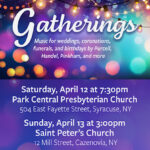Is the Season Slowing You Down?
Fall is officially here, and for most of us, that means shorter days, longer nights, and declining temperatures. It’s become an unspoken rule that come Daylight Savings Time, when we get ready to set our clocks back an hour, we simultaneously kiss our social lives goodbye, and instead opt for weekends filled with movies, takeout and wine.
 It’s no secret that the colder weather that fall brings changes us. It changes the way we think, the way we behave and the way we move! We can’t stop hitting the snooze button, we seriously contemplate quitting our jobs and we find ourselves succumbing to a life of Ramen Noodles and Judge Judy. Getting out of bed and dressed becomes something we dread and physical activity turns into two words we hate. Even if exercise were something we liked, sticking to an exercise regimen would certainly be a lot easier if we craved protein bars, salads and coconut water instead of Mac N Cheese.
It’s no secret that the colder weather that fall brings changes us. It changes the way we think, the way we behave and the way we move! We can’t stop hitting the snooze button, we seriously contemplate quitting our jobs and we find ourselves succumbing to a life of Ramen Noodles and Judge Judy. Getting out of bed and dressed becomes something we dread and physical activity turns into two words we hate. Even if exercise were something we liked, sticking to an exercise regimen would certainly be a lot easier if we craved protein bars, salads and coconut water instead of Mac N Cheese.
As the days get shorter, we see less and less sunlight. This is especially true when we find ourselves getting out of bed before the sun rises (to get the kids ready for school) and leaving work long after it has set. Our main source of vitamin D is sunlight, and when we don’t get sunlight we miss out. Vitamin D is important for serotonin production, and serotonin is important for many functions including our sleep-wake cycles. It’s no coincidence that we experience “daytime drowsiness” when the temperature starts to drop. A lack of sunlight also affects serotonin levels which can lead to feelings of depression, fatigue and an increase in our cravings for carbohydrates.
If your job has you cooped up indoors all day make it a point to get out in the sun for a few minutes on a break. If breaking free isn’t possible, try to work near a window. In one study, office workers who sat near windows received higher white light exposure and slept better than those who did not.
Enough of the small talk! Let’s delve into the science behind all of this shall we?
A Lack of Sunlight Can Make You Sad
Our bodies have summertime and wintertime clocks that are determined by our exposure to the sunlight. A lack of sunlight can cause Seasonal Affective Disorder (SAD), a mood disorder that usually affects people from October through April when daylight becomes scarcer. When exposed to less sunlight, your body produces more melatonin, the hormone which makes you feel sleepy. And just as your body begins craving a place to lie down and take a mid-day nap, your brain begins producing lower levels of serotonin —the neurotransmitter that affects mood, appetite, sleep and sexual desire. Simply put, Seasonal Affective Disorder can be a real problem.
Cold Temperatures Can Lead To Physical Lethargy
Cold temperatures reduce sensory feedback, dexterity, muscle strength, blood flow and balance, which can impact your performance of complex physical tasks. I think we’ve all experienced that initial morning chill that leaves us feeling paralyzed with no desire to get out of bed!
Keep Your Money in Your Pocket
According to research, exposure to sunlight is associated with higher levels of spending. Since sunshine makes us feel happy, energized and more positive, consequently, it also causes us to make more purchases. Consider this finding to be a blessing! The shorter days can lead to less shopping, increased savings and more money in your pocket!
 Temperature Changes Can Cause You to Eat More
Temperature Changes Can Cause You to Eat More
The lack of sunlight associated with cold gloomy days can cause serotonin levels to dip, and as serotonin levels decrease, carbohydrate cravings increase. Eating carbohydrates helps us feel better because the carbs trigger an immediate serotonin increase. However, that euphoric state is short-lived, as serotonin levels drop shortly thereafter. Instead of reaching for a bowl of pasta, opt to grab starchy vegetables like peas, potatoes or pumpkin. They will satisfy your cravings and add much needed sources of vitamins, minerals and fiber to your diet.
Fluctuations in Temperature Can Cause Pain
As atmospheric pressure decreases, the probability of clouds, rain and snow flurries increases. This reduction in atmospheric pressure allows bodily fluids to move from blood vessels to tissues, putting pressure on the nerves and joints. This can lead to increased pain, stiffness and reduced mobility. So, if the forecast calls for “nasty weather,” try something different like a yoga class. Your mind, body and soul will thank you.
Being Outside Can Improve Your Memory and Boost Creativity
Researchers from a 2004 University of Michigan study found that people who spent at least thirty minutes outside during periods of pleasant weather improved their mood, memory and openness to new information. It also proved to enhance creative thoughts. If the sun is shining (even if it’s cold outside), make it a point to get out for a brisk walk. You’ll find that your afternoons will be much more productive.
 Temperature Changes Can Make Us Sick
Temperature Changes Can Make Us Sick
The ideal room temperature for rest is between sixty and seventy degrees. Research says that cooler ambient air supports the body’s natural deep sleep process. However, as the weather gets cooler, we see spikes in colds and the flu. Elevated body temperatures, increased snoring and coughing can make getting a good night’s sleep almost impossible. Try using a humidifier! A humidifier could be a helpful addition to your bedroom since dry indoor air can bother sinuses and make you more susceptible to germs.
In Conclusion
Studying the effects of weather on our bodies is yet another way to better understand how we can optimize our health and our well-being.
So, the next time you find yourself tossing and turning, blowing your nose, or feeling fatigued, take a look at what’s going on right outside your window! Chances are, the influence of outside factors are to blame.
I have been a personal trainer for over seventeen years and I honestly feel that I have one of the best jobs out there! The most rewarding part of my profession is helping one of my clients succeed at reaching their personal fitness goals. Making a difference in someone’s life makes it all worthwhile. I am currently certified by the National Sports Conditioning Association, Apex Fitness Group and the International Sports Science Association.











